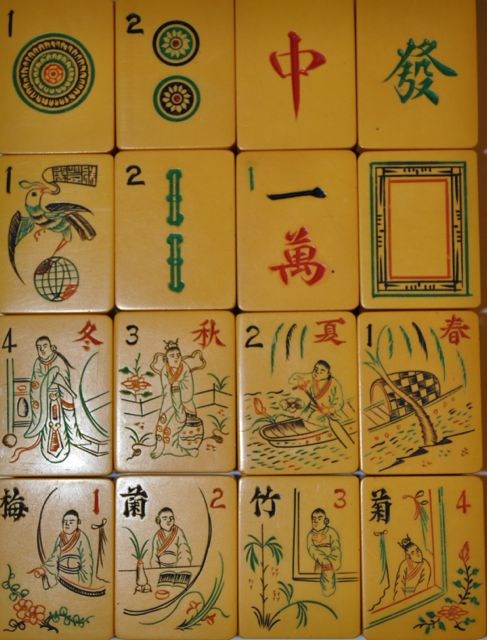This is one of my favorite mass-produced Chinese Bakelite Mahjong sets. I like to call it the Talking Hawk One Bam because of the comic-book like talk bubble coming from the hawk's mouth, translated as a wish for good fortune and longevity. The One Dots resemble flowers within flowers, and the other dots are a much more simplified flower. The Craks are elaborate Wans, and the Bams are rounded. The Red and Green Dragons are the Chinese character Chung (center) and Fa (prosperity). The White Dragon resembles a frame decorated with meanders (abstract patterns).
Notice how the upper level of Flower tiles reads correctly with tiles 4321. The boat would not be recognizable without this orientation, and the wall only works this way too. For the lower tiles, the order does not make a difference. The lower tiles have the four important flowers: plum blossom, orchid, bamboo, and chrysanthemum, shown as if they are growing outside the windows. The bottom row of Flowers probably represents some of the ladies in the Twelve Beauties of Jinling (also known as Dream of the Red Mansion or Dream of the Red Chamber), a tale familiar to most Chinese.


